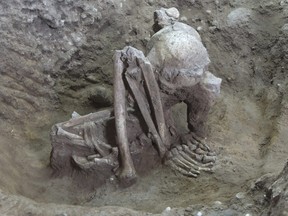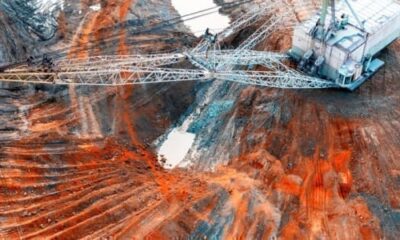Science
Scientists Uncover Ancient Mummies in Southeast Asia, Dating Back 12,000 Years

Researchers have identified what are believed to be the oldest known mummies, dating back as far as 12,000 years, in southeastern Asia. This groundbreaking discovery, featured in a study published in the journal Proceedings of the National Academy of Sciences, reveals insights into ancient funerary practices and the cultural significance of mummification.
Mummification is a process that prevents decay and preserves the bodies of the deceased. While natural mummification occurs in extreme conditions, such as the Atacama Desert in Chile or the bogs of Ireland, various cultures have also practiced embalming to honor their ancestors. Until now, the oldest known mummies were associated with the Chinchorro people, who lived around 7,000 years ago in present-day Peru and Chile.
The recent study involved excavations at multiple archaeological sites across China and Vietnam, with additional findings from the Philippines, Laos, Thailand, Malaysia, and Indonesia. Researchers discovered human remains buried in crouched or squatted positions, some exhibiting cuts and burn marks. Notably, further analysis indicated that these bodies had likely been exposed to heat, suggesting they were smoke-dried over a fire by local hunter-gatherer communities.
Understanding Ancient Practices
According to Hirofumi Matsumura, a study author from Sapporo Medical University, the practice of mummification allowed societies to maintain physical and spiritual connections with their ancestors. He stated that it served as a means of bridging time and memory.
While the findings are significant, human evolution expert Rita Peyroteo Stjerna from Uppsala University, who was not involved in the study, noted that the dating methods used could have been more rigorous. She emphasized the importance of understanding whether mummification practices were consistent across all locations examined.
Despite the ancient origins of these mummies, the practice of mummification remains relevant today. Indigenous communities in regions such as Australia and Papua New Guinea continue to employ methods of smoke-drying and mummifying their dead, showcasing the enduring nature of this cultural practice.
This research not only expands the timeline of mummification but also contributes significantly to the understanding of prehistoric funerary practices. The implications of these findings offer a richer understanding of how ancient societies honored their dead and maintained connections with their ancestry.
-

 World4 months ago
World4 months agoScientists Unearth Ancient Antarctic Ice to Unlock Climate Secrets
-

 Entertainment4 months ago
Entertainment4 months agoTrump and McCormick to Announce $70 Billion Energy Investments
-

 Lifestyle4 months ago
Lifestyle4 months agoTransLink Launches Food Truck Program to Boost Revenue in Vancouver
-

 Science4 months ago
Science4 months agoFour Astronauts Return to Earth After International Space Station Mission
-

 Technology2 months ago
Technology2 months agoApple Notes Enhances Functionality with Markdown Support in macOS 26
-

 Top Stories3 weeks ago
Top Stories3 weeks agoUrgent Update: Fatal Crash on Highway 99 Claims Life of Pitt Meadows Man
-

 Sports4 months ago
Sports4 months agoSearch Underway for Missing Hunter Amid Hokkaido Bear Emergency
-

 Politics3 months ago
Politics3 months agoUkrainian Tennis Star Elina Svitolina Faces Death Threats Online
-

 Politics4 months ago
Politics4 months agoCarney Engages First Nations Leaders at Development Law Summit
-

 Technology4 months ago
Technology4 months agoFrosthaven Launches Early Access on July 31, 2025
-

 Top Stories1 week ago
Top Stories1 week agoFamily Remembers Beverley Rowbotham 25 Years After Murder
-

 Entertainment4 months ago
Entertainment4 months agoCalgary Theatre Troupe Revives Magic at Winnipeg Fringe Festival





















